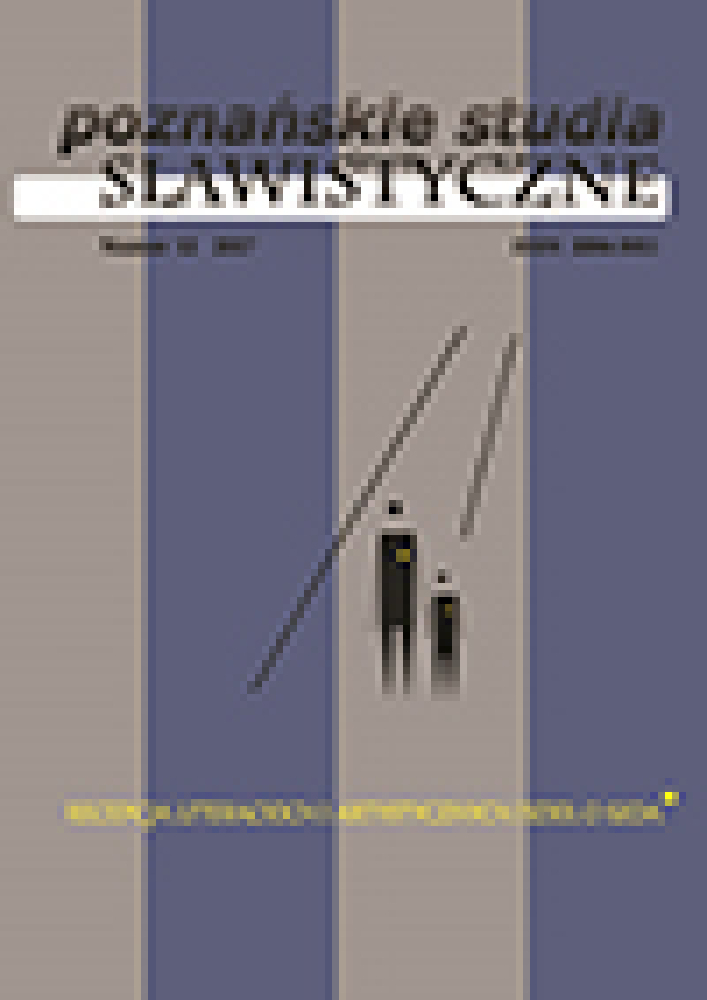Abstrakt
Discussion about the borders restricting (unavoidable today) aestheticization of memory about the Holocaust experience is still valid – in the article are recalled some different strategies of remembering the Holocaust in the art using photography. Two of the artistic projects (Powidoki by Zbigniew Libera and Pocztówki z Auschwitz by Paweł Szypulski) are using authentic photographs to initialize the discussion about trivialization of image, removing it from its original context and, at the same time, “blunting” the sensitivity of the recipient. The other two works (Auschwitz, co ja tu robię by Mikołaj Grynberg and Miejsca nieparzyste by Elżbieta Janicka) are suspended between conversation and silence (two classic poles of memory about the Holocaust). All of these works are disputing with “fixed” models and imaginary experiences, deconstructing pathos, they are talking about the blurring memories and manipulating with memory, about competition of different historic narrations and attempts at overtaking the past, passing the traumatic experiences of the war and the Holocaust to the next generations.Bibliografia
Assorodobraj N., 1963, Żywa historia. Świadomość historyczna. Symptomy i propozycje badawcze, „Studia Socjologiczne” nr 2, s. 204–205.
Ankersmit F., 2004, Pamiętając Holocaust: żałoba i melancholia, in: Narracja, reprezentacja, doświadczenie. Studia z teorii historiografii, ed. E. Domańska, Kraków, pp. 403–426.
Barbaruk M., 2010, Fotograf jako pamiętnikarz. Archiwum Augustyna Czyżowicza, “Kultura Współczesna” No. 1, pp. 159–174.
Baudelaire C., 2000, Nowoczesna publiczność i fotografia, in: C. Baudelaire, Rozmaitości estetyczne, trans. J. Guze, Gdańsk.
Domańska E., 2006, Czy Libera mógłby nas jeszcze uratować?, “Obieg”, , 20.11.2016.
Engelking L., 2007, Laleczki na sprzedaż. Zabawa w Holokaust i handel Holokaustem, in: Holokaust – Šoa – Zagłada v české, slovenské a polské literatuře, ed. J. Holý, Praha 2007, s. 79–94.
Hirsch M., 2012, The Generation of Postmemory: Writing and Visual Culture After the Holocaust, New York.
Jakubowicz R., 2006, Kolory. Albo: gdzie szukać prawdy?, “Atlas Sztuki”, , 20.11.2016.
Jedlińska E., 2006, Elżbiety Janickiej podróże artystyczne do „miejsca nieparzystego”. Refleksje o przeszłości, pamięci, czasie i tożsamości, “Atlas Sztuki”, , 20.11.2016.
Kanicki W., 2014, Pomiędzy muzeum a white cube’em, “Kultura Współczesna” No. 2, pp. 49–56.
Kaźmierczak M., 2012, Auschwitz w Internecie. Przedstawienia Holokaustu w kulturze popularnej, Poznań.
Kowalska U., 2016, Between the Post- and Popmemory. Holocaust Narrative in Contemporary Culture – an Attempt of Exemplification, in: The Holocaust in the Central European Literatures and Cultures: Problem of Poetization and Aestheticization, ed. R. Ibler, Stuttgart, pp. 43–55.
“Prosthetic” Memory, “Aftersights” of Memory, Memory “Easy to Consume”? 345
Kurz I., 2007, Fototożsamość „ja” w czasach fotografii, „Kultura Współczesna” No. 2, pp. 106–117.
Kwieciński B., 2012, Obrazy i klisze. Między biegunami wizualnej pamięci Zagłady, Kraków.
Salzman L., 2004, Awangarda i kicz raz jeszcze. O etyce reprezentacji, trans. K. Bojarska, “Literatura na Świecie” No. 1–2, pp. 201–216.
Sontag S., 2003, Regarding the Pain of Others, New York.
Szypulski P., 2015, Byłem w strasznym miejscu. Pogoda Ładna. O pocztówkach z Auschwitz z Pawłem Szypulskim rozmawia Jakub Gawkowski, “Krytyka Polityczna”, , 20.11.2016.
Śpiewak P., 2013a, Przedstawienie nieprzedstawialnego, w: Sztuka polska wobec Holocaustu / Polish art. and the Holocaust, Warszawa, pp. 6–11.
Śpiewak P., 2013b, Presenting the Unpresentable, trans. M. Mutermilch, w: Sztuka polska wobec Holocaustu / Polish art. and the Holocaust, Warszawa, pp. 14–19.
Tańczuk R., 2007, Cisza fotografii, “Tematy z Szewskiej” No. 1, pp. 82–86.
Atlas sztuki, , 20.11.2016. Culture.pl, , 20.11.2016.
Paweł Szypulski’s official website, , 20.11.2016.
The official website of the project Auschwitz, what am I doing here?, , 20.11.2016.
Licencja
Prawa autorskie (c) 2017 Urszula Kowalska

Utwór dostępny jest na licencji Creative Commons Uznanie autorstwa – Bez utworów zależnych 4.0 Międzynarodowe.
